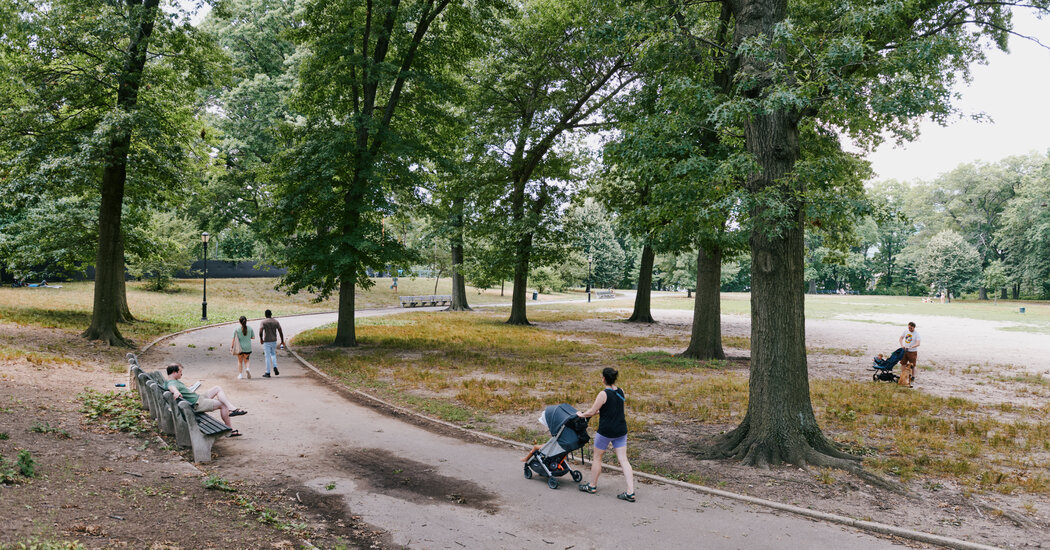A chemical reaction involving emissions from cars and buildings can negate their environmental benefits. New research shows what big cities can do about it.
Oak trees with leaves like outstretched hands and thick, stately trunks reduce the effects of extreme heat around New York City’s five boroughs by shading sidewalks and sucking up planet-warming carbon.
These workhorses also naturally emit a chemical called isoprene. Alone, it is harmless. But when isoprene meets nitrogen oxides, a group of gasses emitted when fossil fuels are burned to power buildings and vehicles, the chemical reaction creates ground-level ozone, a harmful pollutant that can cause respiratory issues.
“The trees themselves don’t create any problems, in fact they solve a lot of problems for us in cities,” said Andrew Reinmann, associate professor of environmental science at the City University of New York and an author of a new study examining the isoprene emissions of city trees. “The problem is cars and fossil fuel combustion in cities that can essentially start to negate or take away some of the benefits that trees are providing us.”
The study, published in July in Environmental Science and Technology, looked at citywide data for every six-by-six-inch square of tree canopy across the five boroughs. The researchers analyzed the types of trees and modeled what could happen to ground-level ozone pollution if the city grew enough trees to cover 40 percent of its land.
In one scenario, if the city only planted oaks, ground-level ozone in Manhattan could increase more than 30 percent. In a second scenario, continuing to plant a mixed canopy like the one that exists today could increase peak ground-level ozone by about 10 percent, depending on the borough.
New York City repeatedly violates federal health-based air quality standards for ozone on hot days, according to the study. Every year more than 400 New Yorkers are estimated to die from ground-level ozone pollution, and more than 4,300 adults and children in the city visit emergency rooms for ozone-related asthma.
